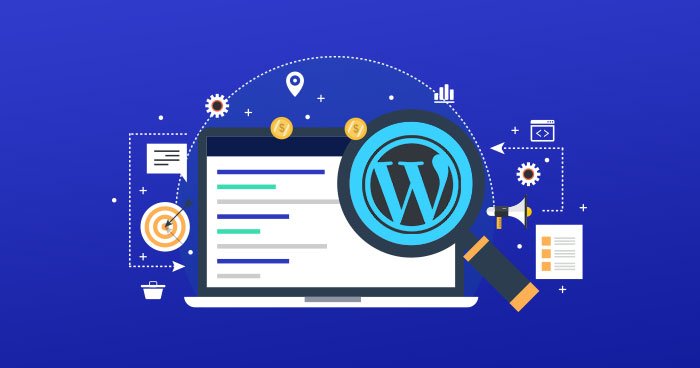The Top SEO Tools Every Small Business Owner Should Know About
Learn the basics of search engine optimization and how to improve your online visibility and website traffic.
KEY TAKEAWAYS
- SEO (Search Engine Optimization) is the process of improving your website’s visibility in search engine results pages (SERPs).
- To improve your website’s SEO, you need to use relevant keywords in your website’s content, metadata, and URLs.
- Your website’s content should be high-quality and provide value to your target audience.
- Building backlinks (links from other websites to your website) can improve your website’s SEO, but they should be from reputable sources.
- You should also focus on improving your website’s user experience (UX), including site speed and mobile-friendliness.
- Regularly updating your website’s content and monitoring your website’s analytics can help you track your SEO progress and identify areas for improvement.
In today’s digital age, having a strong online presence is critical for the success of any business. However, with so many websites out there, how can you make sure that potential customers find yours? This is where SEO (Search Engine Optimization) comes in. By optimizing your website for search engines, you can improve your online visibility, attract more website traffic, and ultimately drive more sales. But where do you start with SEO? In this article, we’ll break down the basics of SEO and provide you with actionable tips to help improve your website’s rankings in search engine results pages (SERPs). From using relevant keywords in your website’s content and metadata to building high-quality backlinks and improving your website’s user experience (UX), we’ll cover it all. So, whether you’re new to SEO or looking to brush up on your skills, keep reading to learn how you can use SEO to boost your business success.
The Basics of SEO
If you’re looking to improve your website’s SEO, it’s important to understand the basics of SEO. In this section, we’ll cover the three main components of SEO: keyword research and analysis, on-page optimization, and off-page optimization.
- Keyword research and analysis
Importance of keyword research
Keyword research is the foundation of SEO. By researching and analyzing keywords, you can identify the terms that people are using to search for products or services related to your business. This information can help you optimize your website’s content to target those keywords, which can improve your online visibility and drive more website traffic.

Photo:
Elegant Themes
Tools for keyword research
There are several tools available for keyword research, including Google Keyword Planner, SEMrush, and Ahrefs. These tools can help you identify relevant keywords and provide insights into their search volume, competition, and potential traffic.
- On-page optimization
On-page optimization refers to the techniques used to optimize individual pages on your website for search engines. Here are some key on-page optimization techniques:
- Meta tags
Meta tags are HTML tags that provide information about a webpage to search engines. The two most important meta tags for SEO are the title tag and meta description. These tags should include relevant keywords and provide a clear and compelling description of the page’s content.
- Content optimization
Optimizing your website’s content is crucial for SEO. Your content should be high-quality, engaging, and provide value to your target audience. Make sure to use relevant keywords throughout your content, but don’t overdo it. Keyword stuffing can harm your SEO and make your content appear spammy.
- URL structure
Your website’s URL structure can also impact your SEO. Use descriptive and concise URLs that include relevant keywords. For example, “https://www.example.com/seo-basics” is better than “https://www.example.com/page1.”
- Internal linking
Internal linking refers to linking to other pages on your website from within your content. This can help search engines understand the structure of your website and improve your website’s user experience.
- Off-page optimization
Off-page optimization refers to the techniques used to improve your website’s SEO that take place outside of your website. Here are some key off-page optimization techniques:
- Backlinks
Backlinks are links from other websites to your website. The quality and quantity of backlinks can impact your website’s SEO. Focus on building high-quality backlinks from reputable sources.
- Social media
Social media can also impact your website’s SEO. Sharing your website’s content on social media can help increase its visibility and drive more website traffic.
- Local SEO
If you have a local business, local SEO is important for improving your online visibility in your local area. Make sure to include your business’s name, address, and phone number (NAP) on your website and other online directories. You can also create a Google My Business listing to improve your local SEO.
Overall, understanding the basics of SEO is crucial for improving your website’s online visibility and driving more website traffic. By conducting keyword research and analysis, optimizing your website’s content and structure, and building high-quality backlinks, you can improve your website’s SEO and achieve business success.

Photo:
Cloudways
Real-World Scenarios of SEO Implementation
While understanding the basics of SEO is important, it’s also valuable to see how SEO is applied in real-world scenarios. In this section, we’ll explore three case studies of businesses that have successfully implemented SEO to achieve increased traffic, revenue, and conversions.
- Case study: Local business using SEO for increased traffic and revenue
A local restaurant in a small town was struggling to attract customers despite having great food and a cozy atmosphere. They turned to SEO to improve their online visibility and drive more traffic to their website.
After conducting keyword research, they optimized their website’s content and structure to target relevant keywords such as “best local restaurant” and “casual dining.” They also claimed their Google My Business listing and optimized it with accurate information and images.
As a result of their SEO efforts, the restaurant’s website traffic increased by 50%, and they saw a 25% increase in revenue within the first six months. They also received more positive reviews on Google, which helped to attract new customers.
- Case study: E-commerce website using SEO for improved product visibility and sales
An online fashion retailer was struggling to compete with larger e-commerce sites in their industry. They turned to SEO to improve their product visibility and increase sales.
After conducting keyword research, they optimized their website’s product descriptions and category pages with relevant keywords such as “women’s dresses” and “summer fashion.” They also implemented a blog on their website and published articles related to fashion trends and styling tips, which helped to attract more website traffic.
As a result of their SEO efforts, the retailer’s website traffic increased by 75%, and they saw a 35% increase in sales within the first year. They also received more inbound links from reputable fashion blogs, which helped to improve their website’s authority and search rankings.
- Case study: Service-based business using SEO for increased leads and conversions
A marketing agency was struggling to generate new leads and conversions for its services. They turned to SEO to improve their online visibility and attract more qualified leads.
After conducting keyword research, they optimized their website’s content and structure to target relevant keywords such as “digital marketing agency” and “SEO services.” They also created landing pages for their services and optimized them for specific keywords such as “SEO audit” and “PPC management.”
As a result of their SEO efforts, the agency’s website traffic increased by 60%, and they saw a 50% increase in leads within the first year. They also received more high-quality backlinks from industry websites, which helped to improve their website’s authority and search rankings.
Overall, these case studies demonstrate the real-world impact of SEO on businesses of different sizes and industries. By implementing SEO strategies such as keyword research and analysis, on-page optimization, and off-page optimization, businesses can achieve increased online visibility, website traffic, and ultimately, business success.
Measuring the Success of SEO
Measuring the success of your SEO efforts is essential to understanding the impact of your strategies and making data-driven decisions. This section will explore the metrics to track and the tools to use for measuring the success of SEO.
- Metrics to track
Organic traffic: One of the most important metrics to track is organic traffic, which refers to the number of visitors who land on your website from search engine results pages (SERPs). By tracking your organic traffic, you can understand how your SEO efforts are impacting your website’s visibility in search results.
- Keyword rankings: Tracking your keyword rankings is another essential metric to measure the success of your SEO efforts. By monitoring your rankings for target keywords, you can understand how well your website is optimized for those keywords and identify opportunities for improvement.
- Backlinks: Backlinks are an important factor in SEO as they indicate the authority and relevance of your website. By tracking your backlinks, you can understand how your link-building efforts are impacting your website’s search rankings and authority.
- Conversions: Ultimately, the success of SEO is measured by the impact it has on your business goals. By tracking conversions, such as form submissions, phone calls, or purchases, you can understand how well your SEO efforts are driving meaningful actions on your website.
- Tools for measuring SEO success
Google Analytics: Google Analytics is a free tool that allows you to track website traffic and user behavior on your website. By setting up conversion tracking and goals, you can measure the impact of your SEO efforts on your website’s conversions.
Google Search Console: Google Search Console is a free tool provided by Google that allows you to monitor your website’s performance in search results. You can track your website’s impressions, clicks, and position in search results, as well as monitor for any errors or issues with your website’s visibility.
Other SEO tools: There are many other SEO tools available, both free and paid, that can help you measure the success of your SEO efforts. These tools can provide insights into keyword rankings, backlinks, and website performance, as well as suggest opportunities for improvement.
Overall, measuring the success of SEO is essential to understanding the impact of your strategies and making data-driven decisions. By tracking metrics such as organic traffic, keyword rankings, backlinks, and conversions, and using tools such as Google Analytics and Google Search Console, businesses can measure the impact of their SEO efforts on online visibility, website traffic, and ultimately, business success.
Common SEO Mistakes to Avoid
While SEO can have a significant impact on online visibility and website traffic, it’s important to avoid common mistakes that can harm your SEO efforts. In this section, we’ll explore some of the most common SEO mistakes to avoid.
- Keyword stuffing
Keyword stuffing is the practice of overusing keywords in an attempt to manipulate search engine rankings. While it’s important to include relevant keywords in your content, overusing them can harm your SEO efforts by making your content appear spammy and irrelevant to users. Instead, focus on creating high-quality, relevant content that naturally includes your target keywords.
- Duplicate content
Duplicate content refers to content that appears on multiple pages of your website or across different websites. While it may seem like a quick way to increase the amount of content on your website, duplicate content can harm your SEO efforts by diluting the relevance of your content and confusing search engines. Instead, focus on creating unique, high-quality content that provides value to your users.
- Ignoring user experience
User experience (UX) is an essential factor in SEO, as search engines prioritize websites that provide a positive user experience. Ignoring UX can harm your SEO efforts by increasing bounce rates, decreasing time on site, and reducing engagement. Instead, focus on creating a website that is easy to navigate, fast-loading, and provides value to your users.
- Not optimizing for mobile
With mobile devices accounting for an increasing amount of website traffic, it’s essential to optimize your website for mobile devices. Not optimizing for mobile can harm your SEO efforts by making your website difficult to use on mobile devices and reducing engagement. Instead, focus on creating a responsive website that adapts to different screen sizes and provides a seamless user experience across devices.
- Neglecting off-page optimization
While on-page optimization is important, neglecting off-page optimization can harm your SEO efforts by limiting your website’s visibility and authority. Off-page optimization includes factors such as backlinks, social media, and local SEO, which are essential for increasing your website’s authority and relevance. Instead, focus on building high-quality backlinks, engaging on social media, and optimizing your website for local search.
Overall, while SEO can have a significant impact on online visibility and website traffic, it’s important to avoid common mistakes that can harm your efforts. By avoiding keyword stuffing, duplicate content, ignoring user experience, not optimizing for mobile, and neglecting off-page optimization, businesses can improve their SEO efforts and achieve greater success in online visibility and website traffic.
Final Thoughts
SEO is an essential component of online marketing that can help businesses improve their online visibility and website traffic. By implementing the basics of SEO, including conducting keyword research and analysis, optimizing on-page and off-page factors, and measuring success through relevant metrics and tools, businesses can achieve their goals of increased traffic and revenue. Additionally, real-world case studies demonstrate the effectiveness of SEO in improving product visibility, generating leads, and increasing conversions. However, it’s important to avoid common mistakes such as keyword stuffing, duplicate content, ignoring user experience, not optimizing for mobile, and neglecting off-page optimization. By avoiding these mistakes, businesses can ensure that their SEO efforts are effective and achieve their desired results of increased online visibility and website traffic. Ultimately, implementing the basics of SEO and avoiding common mistakes can lead to long-term success for businesses in today’s digital age.




































Comment Template